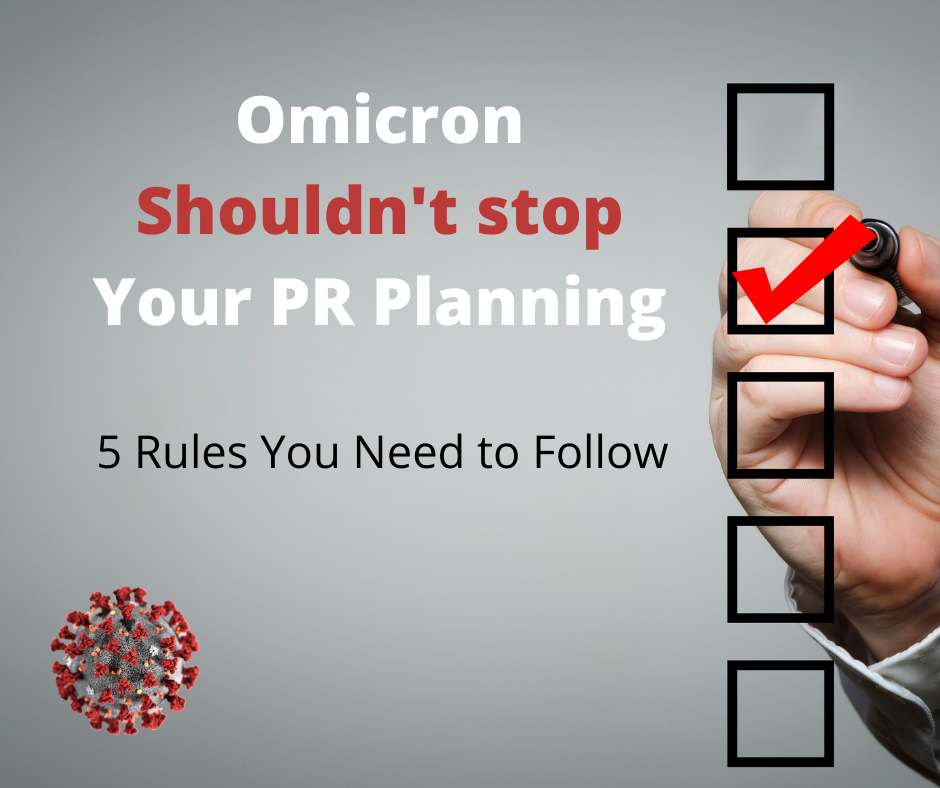This article originally ran on PR Daily.
Consider these five rules to help meet the moment of a new wrinkle in the fight against the pandemic
What can we say when—let’s be honest—we have no freaking idea what’s going to happen and how it could affect our clients and their audiences?
The COVID-19 pandemic has certainly put a fine point on that. Just as we thought things were improving with people of almost all ages getting vaccinated, Omicron had other plans for us.
What’s next? Is another shutdown in store? Is Omicron the last unwanted surprise, or will scientists find another game-changing variant? Will we sit together in an office before 2023? How will that affect the workforce, and will client expectations evolve?
Good PR and communications pros make it our business to learn about our clients and the industries they support. We ask questions to understand objectives and risks and plan how and when to communicate what we can anticipate. COVID-19 has taken us way out of our comfort zone.
So, how can we communicate when change is the only constant? Here are five rules to follow:
1. Address the uncertainty. Few people know what’s happening next. Most people will understand that you don’t have all the answers if you fess up to it. Also, given the constant turn of events, remain flexible and avoid making promises you may not be able to keep. Share what you know, admit what you don’t, and update your audiences continually.
2. But, still make plans. Don’t stop assigning goals and making plans—even very long-term plans—to achieve those goals. It’s advisable to keep plans broad enough that they can weather any COVID storm; fill in more details when the picture looks clearer. Also, identify opportunities that the pandemic has created or uncovered, and factor those in.
3. Clarify COVID procedures. It’s important that your internal and external audiences know what you expect of them. For example, if you’re convening at your office, do you require masks? Proof of vaccinations? Are you scrapping the traditional nine-to-five for shifts? This type of communication can help avoid surprises and enhance productivity and collaboration. You must stay on top of this, also. You’re going to have to adjust your procedures: Make your communications comprehensive, easy to follow and easy to find.
4. Listen carefully to recognize COVID fatigue. The pandemic has had a profound impact. Forget Zoom fatigue: COVID fatigue is real and growing. Before you communicate, collect feedback. Listen and evaluate how your audiences feel and what they need. Demonstrate that you’re being as accommodating as possible. Show that you understand our collective predicament. Also, one conversation with your audiences is insufficient. You’ll need to check in routinely. As this environment shifts, so will their needs.
5. Be authentic. Express compassion (especially at a time like this), but beware virtue signaling, which audiences could view as artificial. Values have more punch when backed up with practical advice. Also, while leaders always want to seem upbeat, downplaying the gravity of the situation could easily backfire and quickly erode trust. Don’t fall into that trap.
We can’t predict the future, but in a pandemic especially, understand your audience’s fears and motivations, share the facts (whatever you’ve got) and communicate with intention and kindness.

